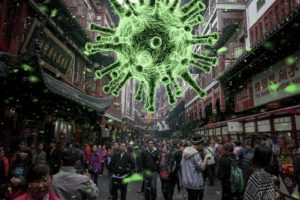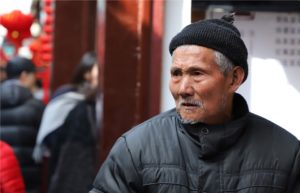Written by S. Shiva (Sri Lanka Reporter)
The 2019-nCoV, otherwise known as the 2019  Novel Coronavirus or the Wuhan Virus, began its bloodthirsty regimen from the 11 million people strong city of Wuhan in the Hubei Province of China in late December 2019. Like many other severe coronavirus diseases (such as SARS – Severe Acute Respiratory Syndrome, and MERS – Middle Eastern Respiratory Syndrome) the infection is said to have been initially mutated from animals. Hence, heated debates are ongoing among researchers and officials around the globe on whether the infection was caused by illegal animals kept for food in unsanitary conditions in the Wuhan Seafood Market, or from escaped animals used for testing in a secret government pathogen research lab in Wuhan.
Novel Coronavirus or the Wuhan Virus, began its bloodthirsty regimen from the 11 million people strong city of Wuhan in the Hubei Province of China in late December 2019. Like many other severe coronavirus diseases (such as SARS – Severe Acute Respiratory Syndrome, and MERS – Middle Eastern Respiratory Syndrome) the infection is said to have been initially mutated from animals. Hence, heated debates are ongoing among researchers and officials around the globe on whether the infection was caused by illegal animals kept for food in unsanitary conditions in the Wuhan Seafood Market, or from escaped animals used for testing in a secret government pathogen research lab in Wuhan.
 The Novel Coronavirus came to the notice of the Chinese Government by the first week of January, as hundreds of people started complaining of symptoms. Within the just over the 1-month period since then, the 2019 Novel Coronavirus has infected over 31000 people with over 4800 at a critical state, and has caused over 600 deaths (statistics taken as at 07th February 2020). But these are just the numbers reported from hospitals. Medical researchers state that the real numbers may be several times more as many of the sick people are preferring to self-quarantine and wait it out, hoping it’s just a normal cold. With the hospitals overflowing and suspected patients being placed into a strict quarantine, the common opinion of the people in the ground zero area of Wuhan is that being suspected to be infected would be equal to imprisonment.
The Novel Coronavirus came to the notice of the Chinese Government by the first week of January, as hundreds of people started complaining of symptoms. Within the just over the 1-month period since then, the 2019 Novel Coronavirus has infected over 31000 people with over 4800 at a critical state, and has caused over 600 deaths (statistics taken as at 07th February 2020). But these are just the numbers reported from hospitals. Medical researchers state that the real numbers may be several times more as many of the sick people are preferring to self-quarantine and wait it out, hoping it’s just a normal cold. With the hospitals overflowing and suspected patients being placed into a strict quarantine, the common opinion of the people in the ground zero area of Wuhan is that being suspected to be infected would be equal to imprisonment.
The panic that started from Wuhan City is now spreading the surrounding provinces of China and the rest of Asia as smaller numbers of infected patients have been detected in these areas.
 What Makes this Coronavirus Scary to Most People?
What Makes this Coronavirus Scary to Most People?
For decades, zombie virus thrillers have been a favorite among horror lovers. The fear and panic that comes with a possible apocalypse caused by the walking dead has kept their hearts racing and made them wake up in chills. But now, the thought has sprung up in the minds of a lot of people, that perhaps this unexpectedly normal looking disease might be a real-life silent horror waiting to jump on their backs.
With a light sore throat, signs of a cold and fever, coughing and other normal flu symptoms, the coronavirus is not specifically detectable as such at the beginning unless the patient is tested. It is only when it causes viral pneumonia and affects the lungs that its severity and deadliness are revealed. At its worst, the disease can cause death from respiratory complications.
The virus also undergoes incubation for a period between 1 to 14 days, during which time any appearing symptoms are undetectable (eg: back ache, a general feeling of being unwell). However, 2019 – nCoV is contagious even during the incubation period, allowing people to get infected without realizing the risk they are under.
There are also no vaccinations available for the disease at this moment. China is currently testing a cure, though the effectiveness is still unknown.
Mass Panic Ensues!
 With China being on the same Asian continent as South Asia, and a few patients being confirmed with coronavirus in the region, the countries are being bogged down with mass panic. There were 3 cases found in India, 1 Nepal and 1 in Sri Lanka, according to official sources.
With China being on the same Asian continent as South Asia, and a few patients being confirmed with coronavirus in the region, the countries are being bogged down with mass panic. There were 3 cases found in India, 1 Nepal and 1 in Sri Lanka, according to official sources.
With the third case in India being found in Kerala, similar to the others, a ‘state calamity’ was announced for the region. The patients were students who had returned from the Wuhan university and were under quarantine with nearly 2000 other students. A wave of panic ensued when two of the students under quarantine managed to disappear before being tested for the coronavirus. Meanwhile, various half-baked theories are popping up within the country as researchers race to make their opinions known
Meanwhile in Sri Lanka, the restaurants in Colombo – especially the Chinese ones – stand empty. With nearly 100,000 Chinese said to have returned to the country from China to continue with construction and other work after the Lunar New Year, there has been a lot of tension being felt among Colombo dwellers as most of these Chinese work in the city. Though Sri Lanka reported only 1 confirmed coronavirus case, there have been over 20 patients admitted to various hospitals around the country under the suspicion of having contracted the Novel Coronavirus. This has caused a lot of nervousness among the general population
 There are lesser vehicles on the road, and almost all the masks in the shops have been sold out for weeks. People are avoiding those with symptoms of a cold, and those with Asian features, like a plague. Many people are avoiding traveling as much as possible, especially during usual periods of traffic congestion – such as office start times and off times. Many restaurants are posting signs saying that Chinese are Not Welcome, hoping that customers will feel safe enough to eat in their shops in that manner. In line with the xenophobia going around in Sri Lanka, were reports of local passengers refusing to travel in the same bus as a Chinese person, and the state having had to ask the Chinese working at a construction to limit their activities to their work area as their movements within the city were causing great panic.
There are lesser vehicles on the road, and almost all the masks in the shops have been sold out for weeks. People are avoiding those with symptoms of a cold, and those with Asian features, like a plague. Many people are avoiding traveling as much as possible, especially during usual periods of traffic congestion – such as office start times and off times. Many restaurants are posting signs saying that Chinese are Not Welcome, hoping that customers will feel safe enough to eat in their shops in that manner. In line with the xenophobia going around in Sri Lanka, were reports of local passengers refusing to travel in the same bus as a Chinese person, and the state having had to ask the Chinese working at a construction to limit their activities to their work area as their movements within the city were causing great panic.
Moreover, the panic and fear are not limited to the general public. Even doctors are vulnerable. The usually very well staffed Medical Research Institute (MRI) in Sri Lanka – that works on vaccinations, cures and detection of diseases – is currently facing a severe lack of doctors as blood samples for suspected infected patients from various hospitals pile up at the desks. Only 2 doctors continue to work, while the others have withdrawn in fear. The doctors who are still there are overworked and exhausted. Requests to the government to send more people has not been fruitful, as all other doctors have turned down the request for fear of getting infected. In another situation in Pakistan, a young Pakistani engineering student studying in China (not from Wuhan, though) returned to his hometown before coming down with flu-like symptoms, He was admitted to the hospital, but found that the doctors were trying to avoid him as much as possible.
Keeping these situations in mind, it is important to remember that panic and xenophobia do not solve anything. So please keep calm, and if you have any flu-like symptoms, follow the advice of the health officials of your region (they may ask you to self-quarantine yourself in your house or ask you to visit a hospital).









